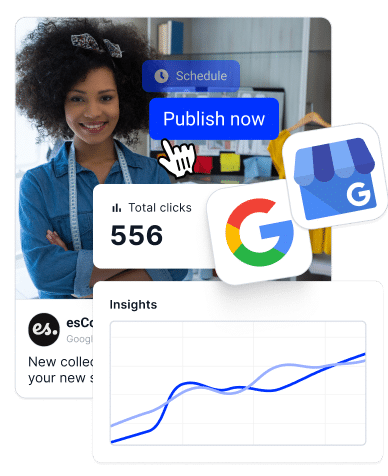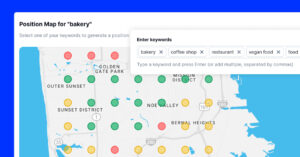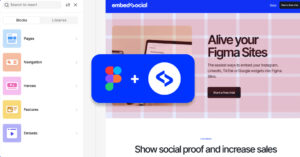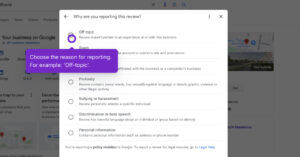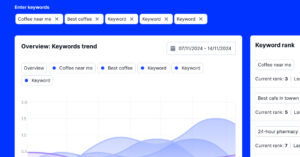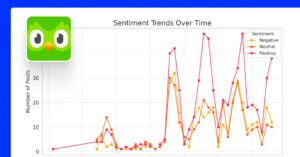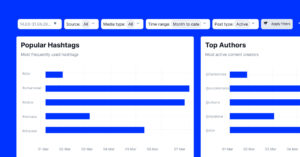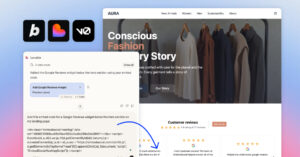Local SEO lives and dies on one thing: the words your customers type into Google. So, if you’re not targeting the right local keywords, you’re invisible.
That’s why learning how to do local keyword research is crucial for any local business, as it connects your products and services to customers in your area.
Unlike global SEO, local keyword research is about intent. It’s not just “plumber” but “plumber near me”, “plumbing services in Brooklyn, or “emergency plumber in Berlin”.
These subtle differences decide who shows up in the map pack.
Therefore, this guide walks you through finding, validating, and applying local keywords so your business can rank higher and attract the right customers.
Understanding local search intent
Local keyword research starts with the users’ intent.
Meaning, Google doesn’t just match words, but looks at what people mean. For local SEO, that intent is tied to geography (IP address), even if the searcher isn’t explicit.
Explicit vs implicit local keywords
Here’s the difference between explicit and implicit keywords:
- Explicit local keywords include a clear location signal, such as “plumber in Manchester” or “best pizza near Central Park,” to indicate where the search comes from.
- Implicit local keywords don’t mention a place but still trigger local results. Searches like “coffee shop” or “emergency dentist” automatically connect to the user’s location.
If you manage multiple Google business locations, you’ll need to target both types. Explicit keywords allow you to build optimized landing pages per city or region.
On the other hand, implicit ones require Google to pick the right branch for the user, making accurate Google Business Profiles and NAP consistency essential.
How Google interprets local intent across regions
All in all, Google’s algorithm blends keyword signals (what you write) with user context like IP address, GPS data, map history, and even past searches. That’s why two people searching for “Italian restaurant” may see different results in Rome and Milan.
So, if you’re managing a multi-location business, you must segment your keyword research by region. You need to create unique sets of local keywords that reflect search intent in each market, from broad city-level terms to hyperlocal neighborhood searches.
Why should you do local SEO keyword research?
Local SEO keyword research is the foundation of ranking on Google, since without it, you’re essentially guessing which terms people use to find your business.
For small businesses, this means wasted time and missed opportunities. Imagine having the best service in town, but your customers are unable to find you.
For instance, your customers might be searching for “24/7 locksmith in Leeds” and you only optimize for “locksmith”, which means they will see your competitors.
If you operate across multiple locations, the stakes are even higher.
After all, each city or neighborhood has its own way of searching. The words that work in London might not work in Birmingham and vice versa.
Done right, local keyword research helps you:
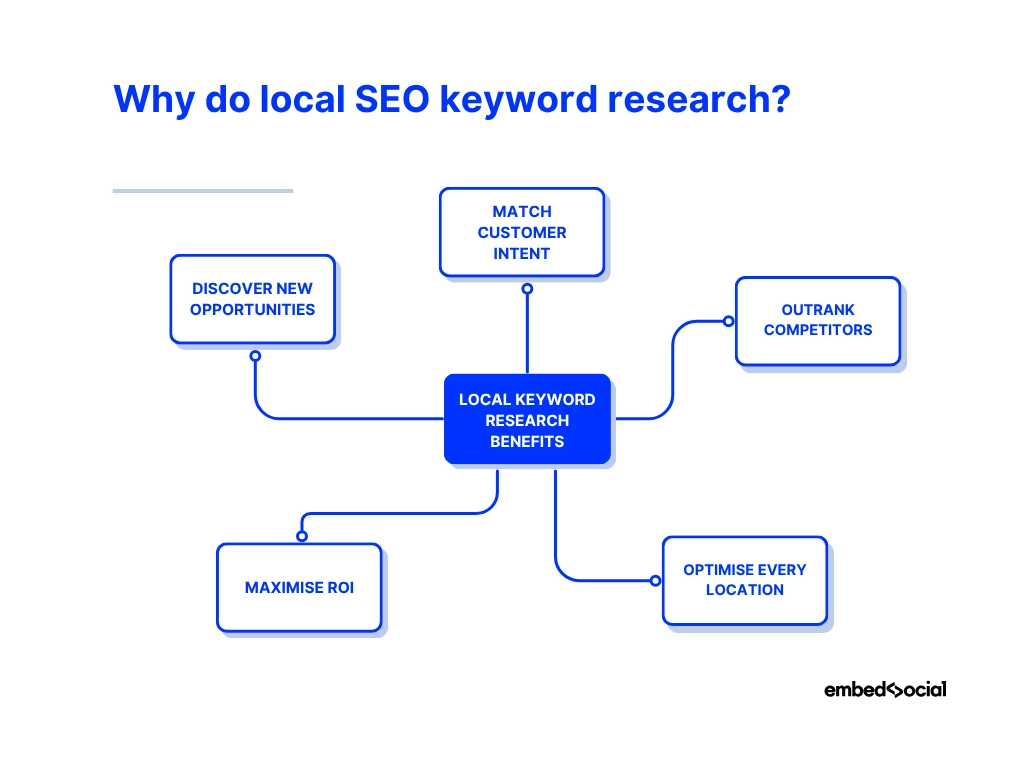
- Match customer intent – show up when people are actively looking for your service;
- Outrank competitors – claim visibility in the map pack before rivals do;
- Optimize every location – create tailored keyword strategies for each branch or region;
- Maximize ROI – focus your SEO and ads on terms that actually convert in each market;
- Discover new opportunities—spot niche services or neighborhood-specific terms you may not have considered.
All in all, to optimize your Google Business Profile, you need quality local keyword research to ensure your business is visible, competitive, and relevant in every area you serve.
Towards that goal, here are all the steps you have to take:
How to find local keywords in 7 simple steps?
Local keyword research works best when you follow a clear process. Here are seven practical steps you can repeat and adapt across multiple locations:
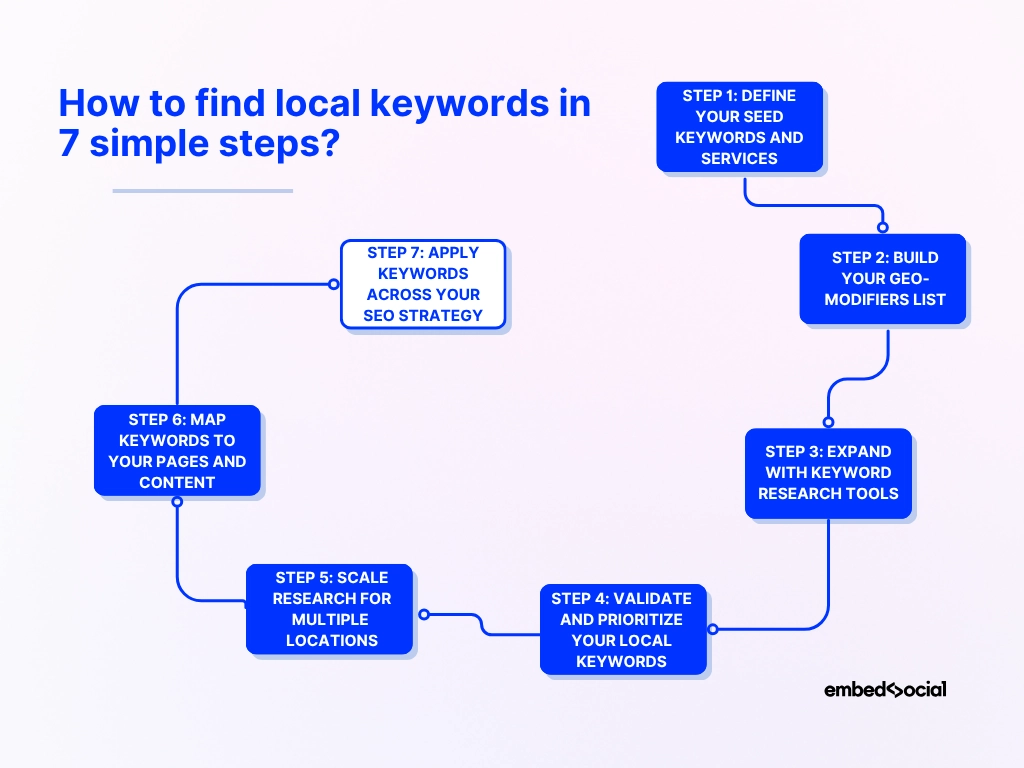
Step 1: Define your seed keywords and services
Your keyword research begins with what you actually offer. Therefore, you must have clarity on your services so your customers have it too.
Using your business offerings and customer language
First, list out your main services and products and think about how customers describe them. For example, a “dermatology clinic” might be searched as “skin doctor.”
Tips for seed keywords:
- Start with your Google Business Profile attributes and categories;
- Include variations customers use in Google reviews or calls;
- Note synonyms and layman’s terms (“dentist” vs. “tooth doctor”).
👉 This seed list anchors the rest of your keyword research, and for multi-location businesses, it should be duplicated for each branch.
Step 2: Build your geo-modifiers list
Keywords alone aren’t enough, as local intent comes from location signals. So, adding geo-modifiers connects your services to a specific place.
Cities, neighborhoods, landmarks, and “near me” queries
Combine your seed keywords with:
- Cities and towns: “plumber in Manchester”;
- Neighborhoods: “coffee shop Soho”;
- Landmarks: “hotel near Central Park”;
- Generic local terms: “near me,” “open now.”
👉 If you have multiple locations, you must build a separate geo-modifier set for each area. This ensures unique targeting without overlap.
Step 3: Expand with keyword research tools
Now it’s time to move beyond brainstorming. Tools help you see which terms people actually search for and how competitive they are.
Free and paid tools for local SEO keyword research
- Google Keyword Planner – solid free starting point;
- Google Trends – spot seasonal and regional spikes;
- AnswerThePublic – great for question-based searches;
- EmbedSocial – map-based rankings across your area and top keywords;
- Semrush / Ahrefs / Mangools – show volumes, competition, and keyword gaps.
👉 Always run your seed + geo-modifiers through at least two tools to get balanced data.
Step 4: Validate and prioritize your local keywords
Not all keywords are worth chasing. Validation helps you separate high-value terms from the noise. Therefore, you must reaffirm your choice of keywords.
Search volume, competition, and intent matching
Ask three questions for each keyword:
- Do enough people search for it? (volume)
- Can we realistically compete for it? (keyword difficulty)
- Does it align with customer intent? (relevance)
👉 Focus on terms with strong intent, even if volumes are modest. Ranking #1 for “emergency plumber Bristol” can be more valuable than ranking #20 for “plumber.”
Step 5: Scale keyword research for multiple locations
If you operate in different cities, a single keyword list won’t cut it. After all, each market has unique phrases, competition, and intent.
Creating separate keyword sets for each market
So, you must perform local keyword research for every business location. For example, “wedding photographer in Glasgow” vs. “wedding photographer in Edinburgh.”
Avoiding cannibalization across city or store pages
Never optimize multiple pages for the same keyword. Instead, create distinct landing pages tied to each location. This avoids competing against yourself in search.
👉 Scaling this way ensures every branch has a chance to rank locally without overlap.
Step 6: Map keywords to your pages and content
Keywords only matter if you know where to use them. Mapping prevents confusion and strengthens your SEO metrics in the long run. Here’s where to place them:
Homepage, service pages, blogs, and location landing pages
- Homepage—broad brand + city keywords (“Florist London”);
- Service pages—specific service + location (“Wedding flowers Manchester”);
- Blog posts—long-tail, question-based queries;
- Location pages—unique content optimized for each branch.
👉 This structure ensures you cover all search intents without diluting authority.
Step 7: Apply local keywords across your SEO strategy
Naturally, the final step is implementation. Your local keywords should appear everywhere your customers search—not just on your website.
On-page SEO, Google Business Profile, and customer reviews
- On-page – use keywords naturally in titles, headings, and body copy;
- Google Business Profile – add them to your description, services, and posts;
- Customer feedback – encourage customers to mention local terms (“best pizza in Brighton”).
👉 Embedding customer language from reviews into your content adds authenticity and boosts local rankings. Plus, that’s the language used by your target audience.
How to do local SEO keyword research right: 3 best practices
Since search behavior shifts quickly, you must adapt your keyword strategies to keep up. Here are three best practices to future-proof your keyword research:
1. Voice search and conversational queries
With the rise of voice assistants, people search differently. Instead of typing “pizza Leeds”, they ask, “Where’s the best pizza place near me right now?”. These natural, longer queries often include question words like who, what, where, when, and how.
For multi-location businesses, this means capturing conversational intent across regions. So think about building FAQ sections and blog posts around these voice-style, longer queries that can help you rank in both local packs and featured snippets.
2. AI search and generative results
AI-powered search engines and features like Google’s SGE are changing how results appear. Instead of a list of links, users see AI summaries that pull in local context.
So, to stay visible, your keyword research must include long-tail phrases and question-based searches that AI tools are more likely to surface.
Furthermore, embedding Google reviews, UGC, and location-specific data into your content also increases the chances of being referenced in AI answers.
3. Avoiding keyword stuffing and over-optimization
It can be tempting to repeat “plumber in Manchester” on every line, but Google’s algorithms now penalize keyword stuffing, which will hurt your rankings.
Therefore, to avoid over-optimization and unreadable content, you can mix explicit and implicit terms, use natural synonyms, and lean on customer language from reviews. This way, you capture search intent without cramming the same phrase everywhere.
Tracking and iterating on your keyword strategy
Remember: search behavior, competitors, and even Google’s algorithm evolve constantly. So, to stay ahead, you need to track results and adjust your keyword list regularly.
How to monitor your keyword rankings?
Start with a local rank tracker like EmbedSocial that shows how your business performs at your current location compared to your competition (based on a 4×4 grid map) and what your current top keywords are, i.e., what the public uses to find your business.
Here’s how your local search rank looks visualized via EmbedSocial:
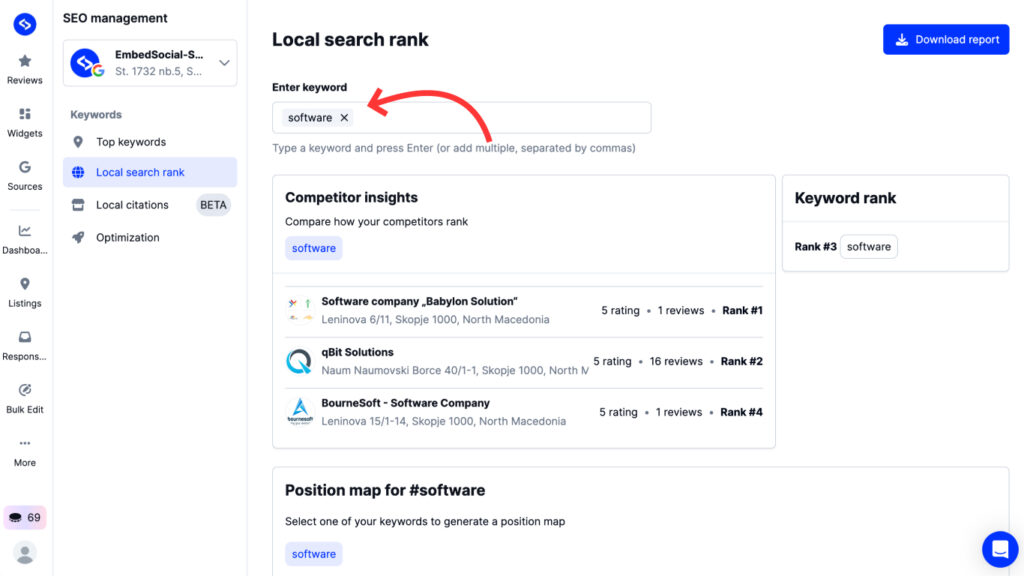
And here is the top keywords list at a glance for the keywords used to find you:
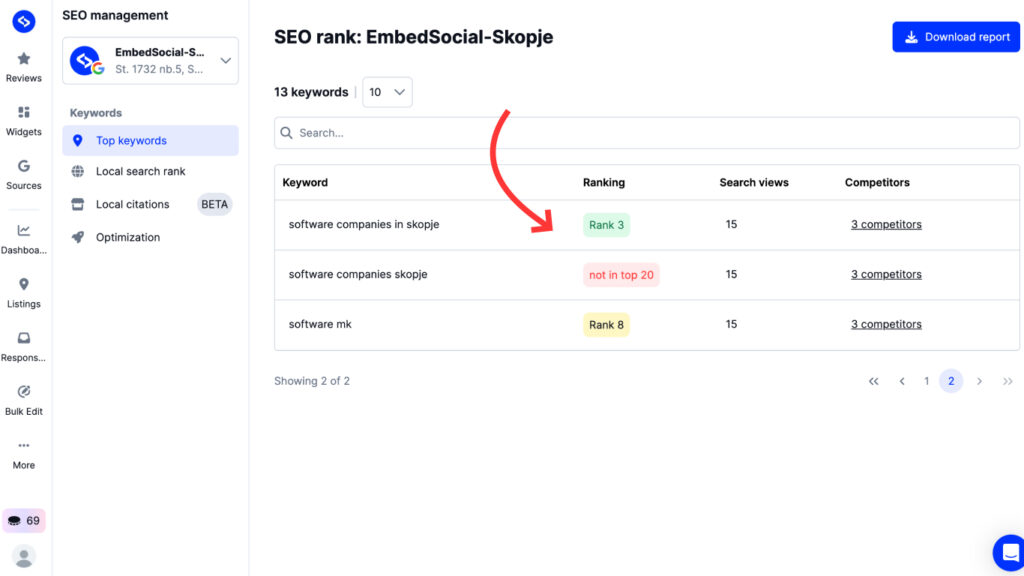
Conversely, some other tools, like LocalFalcon or Semrush’s Position Tracking, let you see if you’re showing up in the map pack and organic results.
However, you must monitor each location separately (if you run more than one). Because a keyword that ranks well in Manchester may struggle in Liverpool and/or London, and without location-specific tracking, you won’t notice these gaps.
How to refine your list across multiple locations?
Every few months, revisit your keyword sets. Look for:
- New rising terms – fresh phrases customers use in reviews or searches;
- Underperforming keywords – terms with little traffic or no conversions;
- Regional differences – keywords that work in one city but not another;
- Seasonal trends – keywords that spike during holidays, events, or peak seasons in specific regions;
- Opportunities for clustering – grouping related terms into themes to build stronger, more targeted content.
At the end of the day, refining your keyword strategy is about focus, not just expansion. Keep what drives results, drop what doesn’t, and build new lists when needed.
Why EmbedSocial makes keyword tracking easier?
Tracking local keywords across multiple locations is challenging if you’re using generic SEO tools. That’s where EmbedSocial’s GBP SEO Rank Tracker gives you an edge.
With this feature, you can:
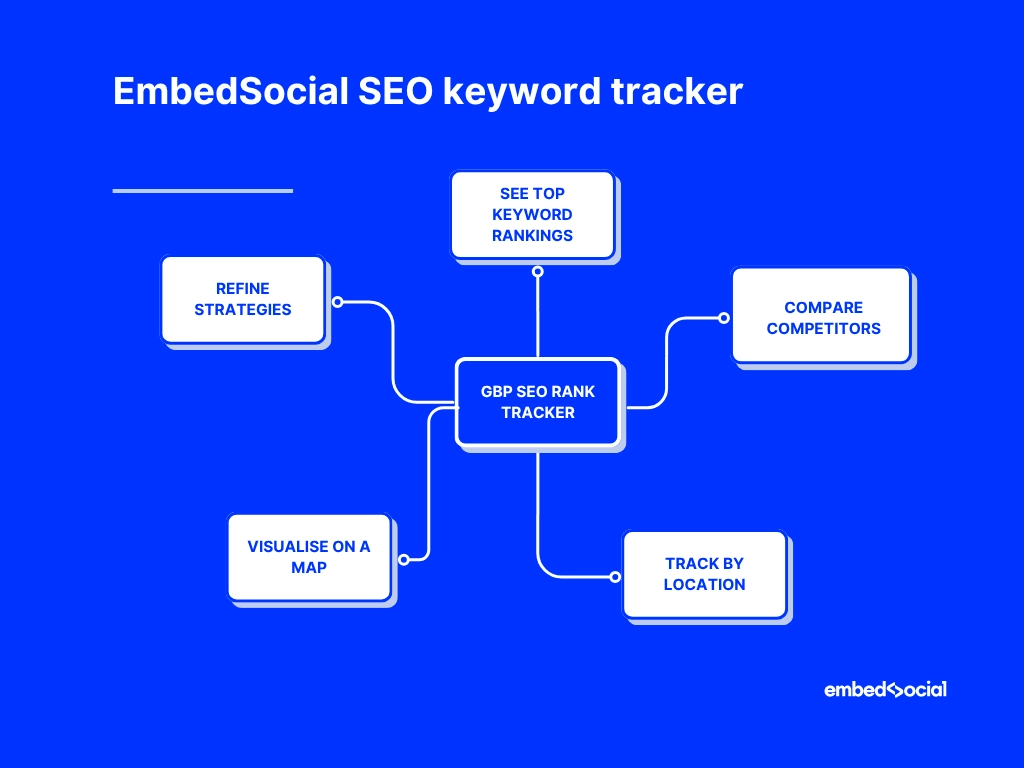
- See top keyword rankings – monitor which local terms bring the most search views;
- Compare competitors – spot where rival businesses rank for the same keywords;
- Track by location – check performance city for individual Google locations;
- Visualize on a map – use our SEO heat map to see where your business shows up;
- Refine strategies – find gaps and opportunities across all your locations with one dashboard.
Instead of juggling multiple local SEO tools, you get a single platform to manage keyword insights alongside all your Google Business Profiles.
Conclusion: Turn research into real local SEO growth
Local SEO keyword research is the engine behind visibility in maps and local search results. Without it, even your best products and services may stay hidden.
For small businesses and multi-location brands, the payoff is huge, as each keyword you uncover brings you closer to customers searching in your area.
However, you must be consistent! Get relevant local keywords, monitor performance, and refine regularly to stay aligned with how people actually search.
Also, start small, scale across locations, and let data guide your decisions—the best way to turn keyword research into stronger rankings and steady growth.
Start tracking your local SEO performance with EmbedSocial’s GBP SEO Rank Tracker and uncover exactly where your business stands across all locations.
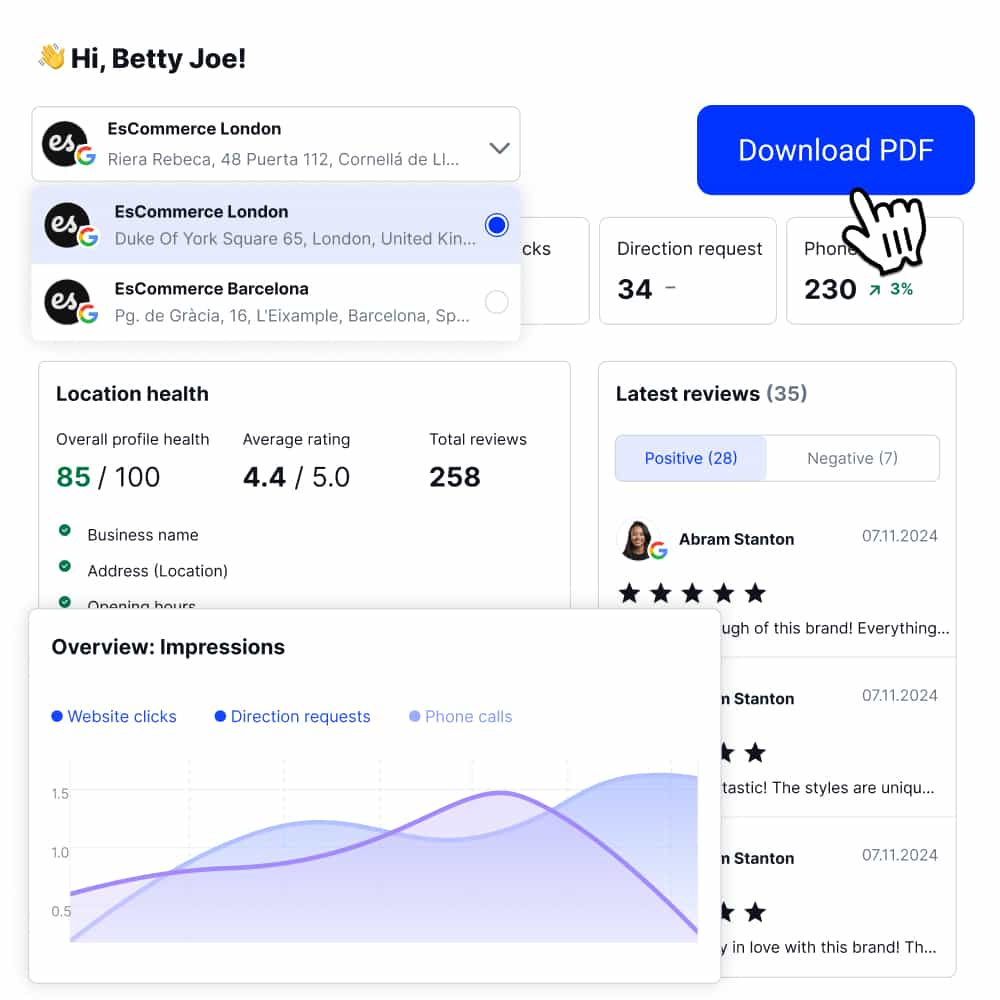
Manage multiple Google Business Profiles effortlessly
- Bulk updates
- AI Reviews Reply Agents
- AI SEO Optimisation
- AI Audit
- Scheduled Reports
- Reviews widgets
FAQs about local keyword research
What is local keyword research?
Local keyword research is the process of finding the search terms people use to look for products or services in a specific area.
What is an example of a local keyword?
“Dentist in Manchester” or “coffee shop near Central Park” are local keywords because they target a service plus a location.
How to conduct local keyword research?
List your services, combine them with city or neighbourhood names, use local keyword research tools like EmbedSocial, and validate based on volume, intent, and competition.
Can I use ChatGPT for keyword research?
Yes. ChatGPT can help brainstorm seed keywords, modifiers, and question-based queries, but you’ll need SEO tools to check volume and rankings.
Can I do keyword research for multiple locations?
Absolutely. Create separate keyword lists for each city or branch, then map them to location-specific landing pages or GBP profiles.
Can I do keyword research for free?
Yes. Google Keyword Planner, Google Trends, and a keyword magic tool like AnswerThePublic can get you started without cost.
Can I track keywords by location?
Yes. Use local rank trackers like LocalFalcon or Semrush to see how you perform in different cities, zip codes, or neighbourhoods.
Do small businesses need keyword research tools?
Yes. Even basic tools help small businesses focus on terms that drive real local traffic and conversions, instead of guessing.
